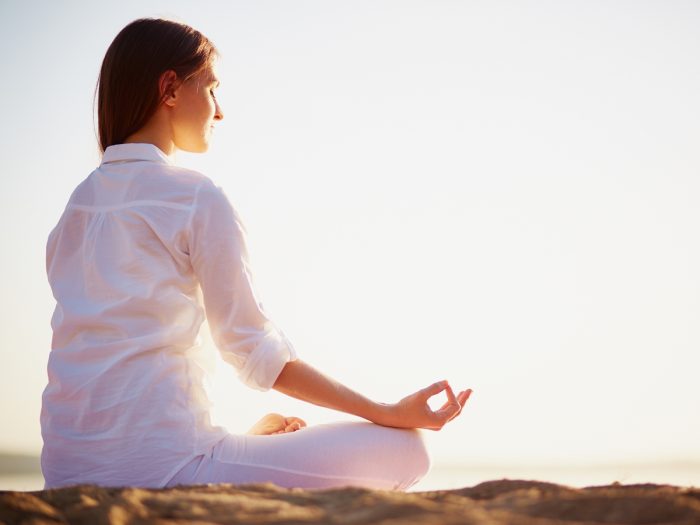The top breathing exercises to reduce anxiety include abdominal breathing exercises and the 4-7-8 breathing technique. Incorrect breathing can cause the muscles of the body to tense, increase anxiety levels, and lead to a buildup of stress in the body.
Deep Breathing Exercises to Reduce Anxiety
According to a 2017 study published in the Frontiers in Psychology journal, deep abdominal breathing, or diaphragmatic breathing, not only helps reduce stress in healthy adults, but also improves cognitive performance. Before you begin breathing exercises, you should get familiar with the way you normally breathe. [1]
Place one hand on your chest and the other hand on your lower abdomen. Start breathing normally and notice if the hand on your lower abdomen raises more than the hand on your chest. If you are breathing correctly, your abdomen will expand when you inhale and contract as you exhale. This is called abdominal breathing, belly breathing, or diaphragmatic breathing. This is the natural way a baby breathes too. But over time, due to stress, we involuntarily take short breaths that make our chest rise more than the belly. This is called chest breathing, which Harvard Health says, causes more stress and anxiety in the body. During chest breathing, we forget to take deep relaxing breaths, which are natural for our body. But it is easy to correct breathing by using the following techniques, and in turn, decrease stress levels in the body. Let’s take a look at the top deep breathing exercises to reduce anxiety. [2]

Yoga can help calm your mind while helping you stay fit. Photo Credit: Shutterstock
Abdominal Breathing Exercise
Try this simple breathing technique to reduce anxiety. You can perform this exercise at any time you want to feel relaxed. It can be done standing, seated, or while lying down.
- Keeping your shoulders relaxed, inhale slowly and smoothly through your nose. Your abdomen should slightly expand and your chest should rise a little.
- Exhale slowly through your mouth, making a soft “whoosh” sound.
- The breathing should be done without any tension in your muscles, in a soft manner. Repeat the cycle for 2-3 minutes, until you feel better.
4-7-8 Breathing Technique
Once you get comfortable with the abdominal breathing exercise, you can progress to the 4-7-8 breathing technique. Here are the steps for this breathing method.
- Inhale through the nose for 4 seconds.
- Hold the breath for 7 seconds.
- Exhale softly through the mouth, making a “whoosh” sound for 8 seconds.
- This can be repeated 2-3 times. Make sure that you remain relaxed during the exercise.
It may be difficult for some people to hold the breath for 7 seconds when they begin. You can modify the technique to halve the time. So, you can breathe in softly for 2 seconds, hold the breath for 3.5 seconds, and exhale for 4 seconds. While holding the breath is an ancient technique practiced in Yoga and Tai Chi, there have been no scientific studies on the verifications of its health benefits. However, anecdotal evidence shows that people feel their tension ease immediately when they practice deep breathing. It is helpful to maintain a progress report to see the effects of breathing on your body and daily life.
Note: It is advisable to consult your doctor before making any change to your daily exercise regimen. People with high blood pressure should seek medical advice before practicing breath-holding.
